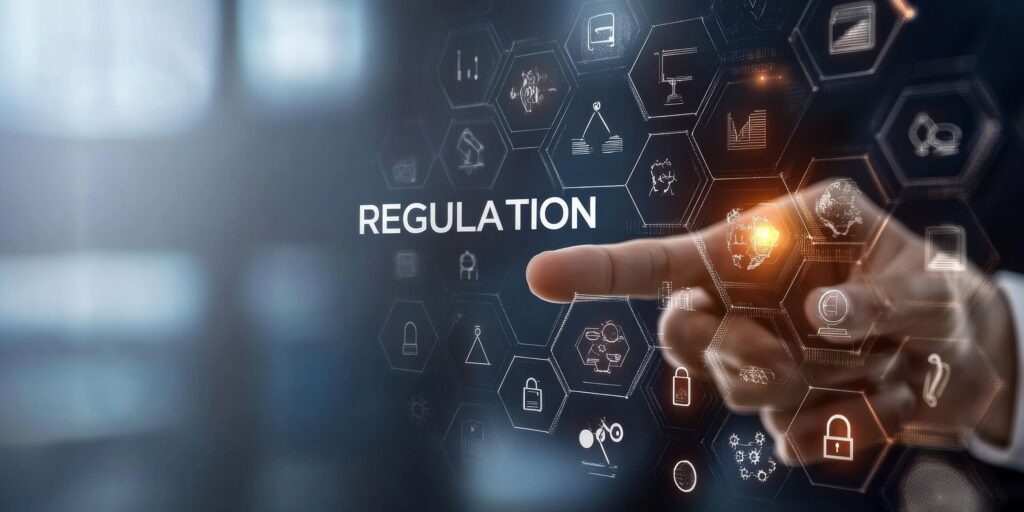Visiting Alabama’s Internet backbone with FCC Chairman Pai
It’s easy to miss the nondescript entrance to Uniti Fiber’s network operations center (NOC) in Mobile, AL. As I walked through the exterior door, I faced a far more imposing one. The $45,000 everything-proof behemoth gave the distinct impression that whatever was behind it was quite important. As I toured part of Alabama’s digital domain with Federal Communications Commission Chairman Ajit Pai, I began to understand the necessity of our technology infrastructure to our future prosperity.
Most of us use the Internet, but we don’t really know how it works. With the rapid expansion of wireless services, we almost never see wires or hardware either. We simply want it to work, be lightning fast, and as cheap as possible.
Behind our Internet experience, expansive hardware investments and talented people ensure that our online experience meets our expectations. The bunkered control room at the NOC looks and feels like a situation room. One bank of monitors constantly lights ups connections for staff to triage. On another wall, Uniti Fiber personnel monitor the NOC’s massive cooling apparatus and weather patterns. A back room contains racks of servers, batteries and more wiring than I’ve ever seen in one place.
In a humorous moment, Chairman Pai asked about an official-looking projection of weather patterns. “Is that from NOAA (National Oceanic and Atmospheric Administration?” he queried. “No, actually that’s an app pulled from an Amazon Fire stick,” staff responded.
It struck me as a perfect example of how advanced technology–historically reserved for governments and corporations–is now accessible to average Americans.
Pai continued with questions about the infrastructure, its resilience and how the network had changed over time. Uniti Fiber staff noted that Internet traffic to customers has more than doubled–from 20 to 50 gigabits per second–since December of last year.
Our guide pointed to an unassuming red box in one of the racks–the Netflix cache. The small box locally holds large portions of the Netflix catalogue to improve rapid access for users. The physical footprint of hardware may be shrinking, but the capability is expanding by orders of magnitude.
Pai believes that businesses like Uniti are key to addressing our nation’s digital infrastructure needs. “The FCC has some funding that’s available,” said Pai, “but ultimately the only way we can close the digital divide is by encouraging the private sector to take the initiative to build the infrastructure.”
After touring the NOC, we visited a microcell tower adjacent to the Bankhead Tunnel. “Tower” is probably the wrong word to describe what we saw. It’s a shorter metal light pole with some boxes attached about half way up. It was only one of many configurations deployed. With new microcell technology, even the Bankhead tunnel has service.
I asked Uniti Fiber President Andy Newton about the challenges facing fifth generation wireless technology (5G). “Our goal is 5G for all, but unfortunately some cities will get left behind during deployment because their regulatory barriers are such that it’s simply impossible to operate,” he said. “Other cities, like Madison and Mobile, have implemented reasonable standards and work with us to make sure they get the best technology available.”
The patchwork of municipalities that view new 5G infrastructure as a revenue opportunity may be the greatest hurdle to its timely deployment. The politics of permitting and navigating through multiple layers of government are every bit as complicated as the underlying technology.
“The Internet is inherently an interstate service,” Pai noted. “For every locality in the United States, every state government, to have a bite at the regulatory apple ultimately will slow down deployment.”
Pai sees the solution somewhere between the FCC and Congress. “The FCC has the primary jurisdiction over deciding what the rules of the road should be,” he said. Even so, Congress must determine the degree to which it’s willing to preempt layers of additional regulation in an effort to provide regulatory certainty.
There’s a lot more to the Internet than what most of us see. Taking a couple of hours to learn more about that was well worth my time. Our technology infrastructure shoulders an exponentially increasing demand for the services and products we use in our daily lives. One way or another, consumers will foot the bill for the next generation of technology infrastructure. As for me, I’d prefer my dollars paying for the network of the digital future rather than a patchwork of government bureaucracies.








